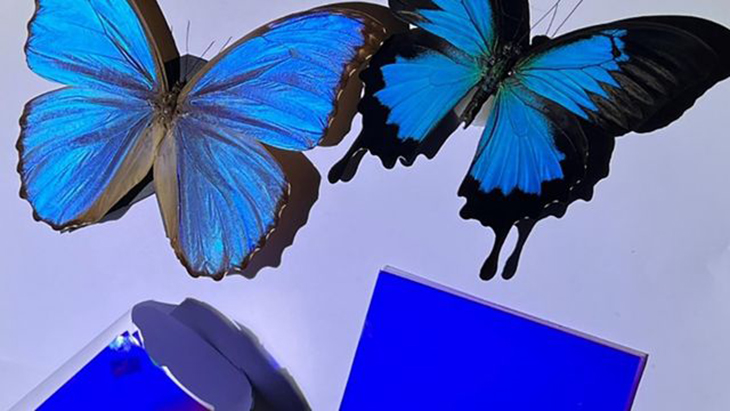
Innovative nanofilms have the potential to dramatically decrease energy consumption for cooling applications in buildings and vehicles.
Similar to how white clothing remains cooler compared to other colors by reflecting sunlight rather than absorbing it, colors such as blue or black tend to heat up when they absorb light. However, novel cooling films, drawing inspiration from the nanostructures found in butterfly wings, have the capacity to mitigate a significant portion of this heat absorption while introducing vibrant coloration.
These groundbreaking films, characterized by their non-absorptive properties, hold promise for application on the exteriors of buildings, vehicles, and machinery, presenting a compelling opportunity to reduce the energy requirements for cooling purposes.
“In buildings, large amounts of energy are used for cooling and ventilation, and running the air conditioner in electric cars can reduce the driving range by more than half,” said research team leader Guo Ping Wang from China’s Shenzhen University. “Our cooling films could help advance energy sustainability and carbon neutrality.”
An article featured in the journal Optica reports that these films can effectively reduce temperatures by approximately 2°C below the surrounding ambient air temperature. Additionally, the researchers observed that when exposed to outdoor conditions throughout the day, the blue variant of these films exhibited a remarkable cooling effect, staying approximately 50°F (26°C) cooler than conventional blue automobile paint.
If these films were applied to buildings, they could potentially lead to substantial energy savings by reducing the need for air conditioning.
“With our new films, excellent cooling performance can be achieved, no matter the desired color, saturation or brightness,” said Wang. “They could even be used on textiles to create clothes of any color that are comfortable in hot temperatures.”
Introducing the Morpho-Butterfly
A blue-painted car takes on its hue by absorbing light, which consequently heats up the vehicle. In contrast, Morpho butterflies achieve their intensely saturated blue appearance through the nanostructure of their wings. To replicate this effect without light absorption akin to conventional paint, researchers have developed cooling nanofilms inspired by the Morpho butterflies’ wing structures.
In the creation of these Morpho-inspired nanofilms, researchers placed a disordered material (resembling frosted glass) beneath a multi-layered structure composed of titanium dioxide and aluminum dioxide. This assembly was then positioned on top of a silver layer, which reflects all light, thereby preventing the absorption of solar radiation and the resulting heat buildup.
The specific color of the film is determined by how the components in its layered structure reflect light. For instance, to generate the color blue, the multi-layered material is engineered to reflect yellow light within a very narrow range of angles, while the disordered structure diffuses the blue light across a wide area.
Although passive photonic thermal management of this kind has been achieved in the past, it was primarily used with white or transparent objects due to the challenges of maintaining both a wide viewing angle and high color saturation.
“Thanks to the layered structure we developed, high saturation and brightness can be achieved by optimizing the structure,” Wang said.
In order to evaluate the efficacy of their innovative technology, the scientists crafted films in varying colors—blue, yellow, and transparent. These films were then strategically positioned outdoors at Shenzhen University, covering a range of surfaces including rooftops, vehicles, fabric, and mobile devices. Employing thermocouple sensors and infrared cameras to gauge temperature changes, the team observed that during winter, the cooling films were capable of reducing temperatures by approximately 27°F (15℃) in comparison to the underlying surfaces. In contrast, during the summer months, these films exhibited an even more remarkable cooling effect, lowering temperatures by an impressive 63°F (35 ℃).
The researchers also noted that by substituting the silver film with aluminum, the cost of manufacturing these films could be significantly reduced, rendering them more economically viable and amenable to scalable production techniques. Having successfully demonstrated the cooling capabilities and color variations of these films, the research team’s next phase involves a thorough exploration and enhancement of other essential characteristics, including mechanical strength and chemical resilience.
What are your thoughts? Please comment below and share this news!
True Activist / Report a typo


